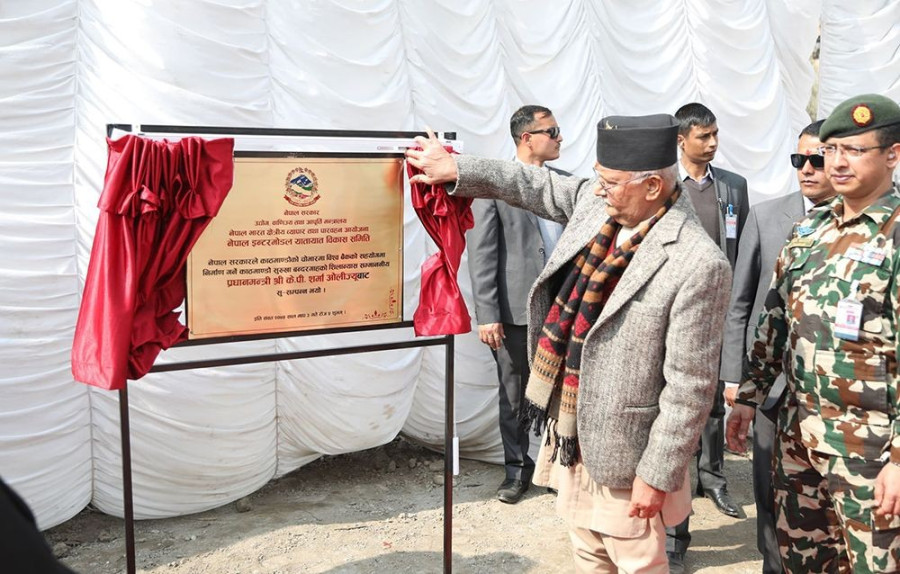Valley
PM lays foundation stone for Chobhar dry port as locals protest
Prime Minister KP Sharma Oli on Thursday laid the foundation stone for a dry port at Chobhar in the southwestern part of Kathmandu Valley amid protests from locals who have been objecting to the plan to build the infrastructure in the area.
Prime Minister KP Sharma Oli on Thursday laid the foundation stone for a dry port at Chobhar in the southwestern part of Kathmandu Valley amid protests from locals who have been objecting to the plan to build the infrastructure in the area.
Police arrested at least 54 protesters from the area where around 150 locals had gathered since Thursday morning to protest against the government’s forceful move to destroy the place of historical significance, said Panchha Lal Maharjan, coordinator of the Chobhar Conservation Committee.
According to Maharjan, the facility will destroy the Jal Binayak Temple, one of the Valley’s most important Ganesh shrines.
It also houses Manjushree Cave. Myths and legends about the birth of Kathmandu Valley speak of the deity Manjushree cutting the hill at Chobhar into half with a mighty sword. “We are also constructing a statue of Manjushree at the site to make Kirtipur a tourist destination.”
Apart from the site carrying historical and religious significance, there are a number of issues unsettled since the closure of the Himal Cement Factory. The government has claimed that it has acquired 1,054 ropanis of land originally belonging to the now defunct cement factory. Of the total, 228 ropanis have been allocated for construction of the dry port. The remaining 826 ropani area has been proposed to be developed as an international exhibition centre.
Maharjan, however, said the government has not acquired all the private land. The government has yet to pay 416 employees of the cement factory their salary for 19 months, said Maharjan. “There are a number of people whose houses were destroyed when the cement factory was built.”
Laying the foundation stone, the prime minister said the government was willing to listen to the grievances, adding that the dry port will create employment opportunities for the locals. Once the facility is set up, Oli said, Kathmandu Valley would not face a shortage of essentials, as it would house goods imported via railway from India and China in its warehouse.
Rabi Shankar Sainju, executive director of the Nepal Intermodal Transport Development Board (NITDB), a government agency responsible for the construction and operation of the dry port, said the board had acquired the cement factory’s property from the now-defunct Nepal Industrial Development Corporation.
“The corporation’s audit shows there are no employee liabilities. However, if the issue is genuine, we will discuss the matter with the Finance Ministry—and pay them.”
In August last year, Oli was scheduled to lay the foundation stone for the dry port but the event was postponed at the last hour.
The board, under the ministry, is in charge of the construction project. The World Bank has agreed to provide a soft loan of $22 million to build the facility.
The board has awarded the construction contract to international bidder Aashish joint venture and local bidder Lumbini-Koshi and Neupane joint venture. The construction will take 18 months to be completed, said Sainju. “We’ll be mobilising the contractor at the site soon.” There were 285 people living at the site when the government acquired it to establish the cement factory more than four decades ago. The cement factory was built in 1974 as a gift from the German government. After the plant was closed in 2002 due to mismanagement and environmental concerns, the government decided to build the dry port and an international standard exhibition centre there.




 14.12°C Kathmandu
14.12°C Kathmandu








%20(1).jpg&w=300&height=200)

